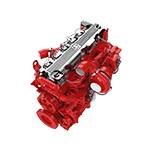Oct . 11, 2024 19:09 Back to list
brake drum parts diagram
Understanding Brake Drum Parts A Comprehensive Overview
The brake system of a vehicle is a crucial element that ensures safety and control while driving. Among the various types of braking systems, drum brakes are commonly used in many cars and light trucks. The brake drum parts diagram provides a visual representation of the components involved in this system, and understanding these parts is vital for anyone interested in automotive mechanics or vehicle maintenance.
Key Components of Brake Drums
At the heart of the drum brake system is the brake drum itself. This cylindrical component is typically made from cast iron or, in some cases, aluminum. The brake drum is mounted on the wheel hub and rotates with the wheel. When the brakes are applied, the brake shoes press against the inner surface of the drum, creating friction that slows down the vehicle.
The brake shoes are another essential component. These curved pieces of metal are lined with friction material (such as a composite or organic material) on the surface that makes contact with the drum. When the brake pedal is pressed, hydraulic fluid from the master cylinder forces the shoes outward against the drum, enabling effective braking action.
Other Essential Parts
1. Wheel Cylinder The wheel cylinder is a crucial part of the drum brake assembly. It houses pistons that are activated by hydraulic pressure when the brake pedal is pressed. This pressure pushes the pistons outward, forcing the brake shoes against the drum.
2. Return Spring After the brake is released, the return springs pull the brake shoes back toward the neutral position away from the drum. This mechanism prevents unnecessary wear and ensures the shoes do not remain in contact with the drum when not braking.
brake drum parts diagram

3. Adjuster Mechanism The adjuster mechanism compensates for brake shoe wear over time. It automatically adjusts the position of the brake shoes to maintain the optimal distance from the drum. This feature is crucial for maintaining consistent brake performance and is usually located between the two brake shoes.
4. Backing Plate This is the mounting surface for the brake components. It holds the brake shoes, wheel cylinder, and springs in place, ensuring that all parts are correctly aligned during operation.
5. Brake Drum Hardware Various small components such as clips, retainers, and expander links are integral to the assembly. These components secure the brake shoes and springs in their appropriate positions, ensuring smooth operation of the brake system.
Maintenance Insights
Understanding the brake drum parts diagram not only helps in comprehending how the braking system works but also serves as a guide for maintenance. Regular inspections of the brake system can identify wear and tear on the brake shoes, drum, and other components, allowing for timely replacement and adjustments.
Moreover, keeping an eye on the brake fluid level is essential, as it directly affects the hydraulic system's performance. If the fluid is low, filling it up may resolve issues related to brake responsiveness. However, if the fluid appears contaminated, a full flush and replacement are necessary.
Conclusion
In conclusion, the brake drum parts diagram offers a detailed look at the critical components that work together to ensure effective braking in vehicles. By familiarizing ourselves with these parts and their functions, we can better appreciate the complexities of automotive systems, ultimately leading to safer driving practices and more effective vehicle maintenance. Whether you are a car enthusiast or a general driver, understanding these fundamental aspects can be incredibly beneficial.
-
Scania Brake Drums: OEM Quality for Optimal Safety & Durability
NewsAug.16,2025
-
R.V.I: Advanced Remote Visual Inspection for Precision
NewsAug.15,2025
-
Discover HYUNDA: Innovative Vehicles, Equipment & Solutions
NewsAug.14,2025
-
R.V.I: Unlock Advanced Insights & Real-time Performance
NewsAug.13,2025
-
Kamaz Brake Drum: Durable & Reliable for Heavy Duty Trucks
NewsAug.12,2025
-
Heavy Duty Iveco Brake Drum - Premium Quality & Safety
NewsAug.11,2025
